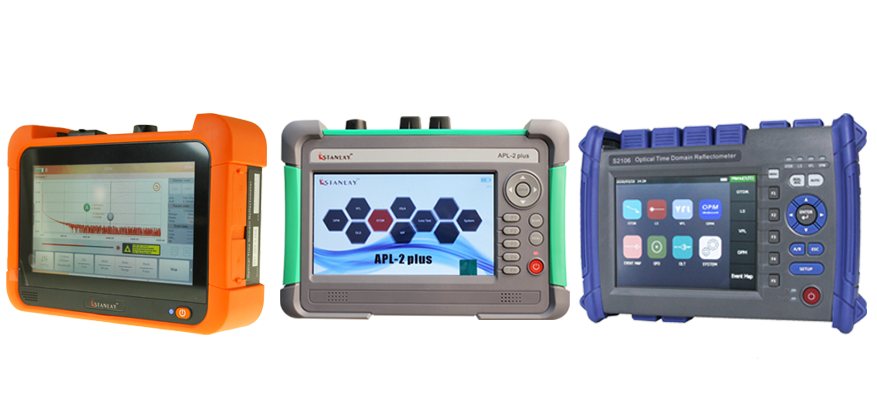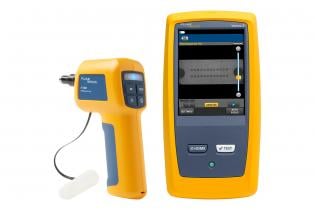A Comprehensive Overview to Optical Measurement System for Fiber Evaluation
When it concerns fiber analysis, understanding optical measurement systems is vital for reviewing performance and ensuring top quality. You'll discover essential techniques like interferometry and spectroscopy, which aid you measure key criteria. There's even more to it than just these methods; mastering attenuation dimension techniques can significantly influence your network's performance. As you browse via this guide, you'll discover insights that might transform your technique to fiber optics.
Comprehending Optical Measurement Equipments
When you check out optical dimension systems, you'll uncover they're essential for analyzing fibers with accuracy. These systems use light to examine different features of fibers, consisting of diameter, refractive index, and uniformity. By using strategies like interferometry and spectroscopy, you can get valuable insights into the fiber's properties.You'll discover that these systems are created to reduce mistakes and improve precision, making sure reliable information for your evaluation. Different arrangements, such as single-mode and multi-mode systems, satisfy certain fiber kinds, permitting you to choose the finest fit for your needs.Moreover, the integration of advanced software program devices aids you interpret the information successfully, making it much easier to recognize any type of disparities or defects. As you explore deeper into these measurement systems, you'll appreciate how they improve the analytical procedure and boost the overall quality of fiber manufacturing and screening.
Key Criteria for Fiber Analysis
Key parameters for fiber evaluation play a necessary function in establishing the high quality and performance of fiber optics. When you examine a fiber, you'll wish to concentrate on features such as depletion, transmission capacity, and modal diffusion. Attenuation measures the loss of signal strength as light travels through the fiber. A reduced attenuation value suggests much better top quality and longer transmission distances - fiber measurement.Bandwidth refers to the data-carrying capacity of the fiber and is important for high-speed interaction. You'll require to evaluate the transmission capacity to ensure it fulfills your application needs. Modal diffusion, which arises from the different rates at which light journeys via numerous settings in multimode fibers, impacts signal clarity
Techniques for Attenuation Measurement

Data transfer and Its Influence On Efficiency
Comprehending bandwidth is vital for optimizing fiber performance, as it straight influences the quantity of information that can be transmitted over a network. Higher bandwidth implies you can send out even more info concurrently, permitting for faster interaction and far better overall efficiency. When you're dealing with fiber optics, it's essential to consider just how data transfer interacts with fiber features, such as core dimension and material properties.If the data transfer is limited, you might experience data loss or slower speeds, impacting your applications. Furthermore, various sorts of fibers can sustain differing transmission capacity degrees, so it's crucial to select the ideal fiber for your particular needs.You ought to additionally bear in mind that environmental variables, like temperature level and exterior interference, can affect bandwidth. By comprehending these facets, you can make educated choices to boost your fiber optic systems, ensuring reliable and efficient data transmission.
Refractive Index Measurement Techniques

Overall Inner Reflection
Overall interior representation (TIR) acts as a fundamental principle for measuring the refractive index of fibers. When light trips from a denser tool to a much less dense one, it can only be fully shown if the angle of occurrence surpasses a details limit, understood as the important angle. This phenomenon allows you to establish the refractive index by analyzing the angles at which light reflects or refracts. By utilizing a configuration that guides light into a fiber and gauges the resulting angles, you can compute the refractive index accurately. Recognizing TIR not just improves your fiber evaluation but additionally enhances the layout and performance of optical systems. So, leveraging TIR can lead to a lot more efficient fiber-based applications.
Interferometric Strategies
Building on the concepts of overall internal representation, interferometric techniques offer a powerful means for measuring the refractive index of fibers with high accuracy. These techniques exploit the interference patterns developed when light beams split and recombine after taking a trip different courses. You can utilize setups like the Michelson or Mach-Zehnder interferometer to examine phase changes brought on by changes in refractive index. By thoroughly calibrating your system and examining the resulting edges, you can determine the refractive index with impressive precision. It's crucial to preserve secure environmental conditions to reduce errors. With these techniques, you'll enhance your understanding of fiber residential properties, resulting in far better performance in various applications, from telecommunications to sensing unit technology.
Modal Dispersion and Its Significance
Modal dispersion refers to the spreading of light pulses as they take a trip via a fiber, which can impact the general efficiency of the system. You'll see that this phenomenon can cause indicate distortion, influencing data transmission rates and top quality. Understanding its significance is crucial for enhancing fiber optic designs.
Meaning of Modal Dispersion
In optical fiber communications, modal diffusion plays a significant duty in identifying signal high quality and transmission speed. It takes place when various light modes take a trip at varying rates via the fiber. Given that each mode has distinct courses and features, they can arrive at the obtaining end at various times. This moment difference can result in indicate dispersing and distortion, which can degrade the general performance of the communication system. You might encounter modal dispersion largely in multimode fibers, where the several paths of light aggravate the problem. Recognizing modal dispersion is important for optimizing fiber layouts and making sure that your interaction systems run effectively, preserving the image source honesty of the transmitted signals over longer distances.
Results on Fiber Performance
Recognizing modal dispersion helps highlight its results on fiber performance. This sensation takes place when different settings of light traveling at differing speeds within the fiber, leading to signal dispersing over time. As you examine optical fibers, you'll notice that boosted modal diffusion can greatly weaken signal quality, leading to minimized data transfer and longer transmission ranges. In useful terms, this means your data can arrive distorted or delayed, influencing general communication performance. To minimize these effects, you could think about utilizing single-mode fibers, which minimize modal dispersion. By selecting the right fiber kind and understanding exactly how modal dispersion influences performance, you can boost transmission top quality and warranty reliable data transfer in your optical measurement systems.
Devices and Technologies for Optical Measurements
When it concerns optical dimensions, several ingenious devices and innovations go to your disposal to improve fiber evaluation. You'll find fiber optic testers, which evaluate signal high quality and performance, important for keeping excellent network effectiveness. Optical time-domain reflectometers (OTDRs) are vital for situating faults and gauging loss over ranges, supplying detailed insights right into fiber stability. Additionally, spectrometers can analyze light spectra, helping you identify product buildings and composition.Don' t ignore the importance of imaging systems, like electronic microscopic lens, that enable you to visually evaluate fiber surfaces for flaws. Consider utilizing polarization analyzers to gauge stress and strain in fibers, which is vital for comprehending their behavior under different problems. By leveraging these devices and modern technologies, you can greatly enhance your fiber analysis procedures, making sure dependability and high performance in your optical networks.
Often Asked Inquiries
What Are the Costs Related To Optical Measurement Systems?
The expenses connected with optical measurement systems can differ substantially. You'll require to assess that site equipment prices, upkeep costs, software application licenses, and possible training expenses. Budgeting thoroughly will help you stay clear of unexpected financial obstacles down the line.

Just How Frequently Should Fiber Evaluation Be Executed?
You must do fiber evaluation frequently, normally every six months or after substantial changes in the setting (optical fibre diameter analyzer). This assures excellent performance and assists identify prospective problems before they affect your system's effectiveness and integrity
Can Optical Measurement Solutions Be Adjusted at Home?
Yes, you can adjust optical dimension systems in your home, yet it calls for accuracy. Make sure you comply with the manufacturer's standards, use suitable calibration standards, and ascertain your outcomes to guarantee accuracy in your dimensions.
What Industries Typically Utilize Optical Measurement Solutions?
You'll locate optical dimension systems extensively used in markets such as telecoms, manufacturing, health care, and research study. They're essential for high quality control, fiber analysis, and ensuring accurate measurements in numerous applications, improving efficiency and accuracy throughout sectors.
Exist Any Safety Worry About Optical Measurement Equipments?
Yes, there are safety concerns with optical measurement systems. You need to constantly put on safety eyewear to protect your eyes from intense source of lights and assurance proper training to handle devices safely and prevent mishaps.